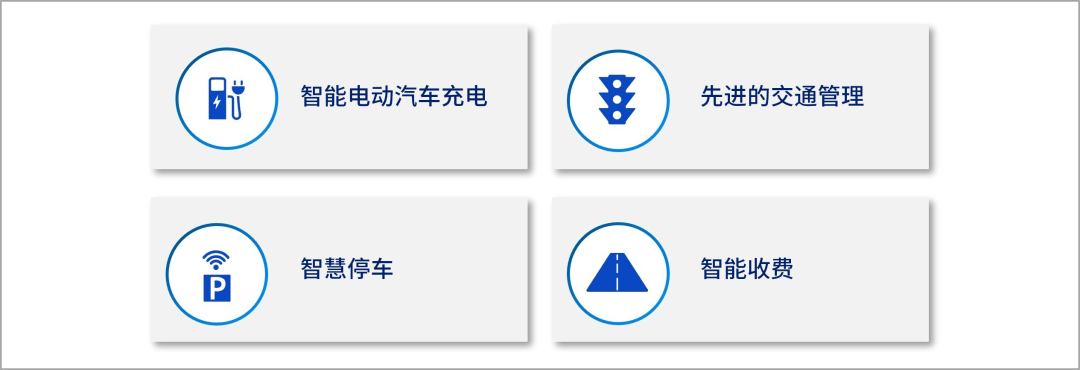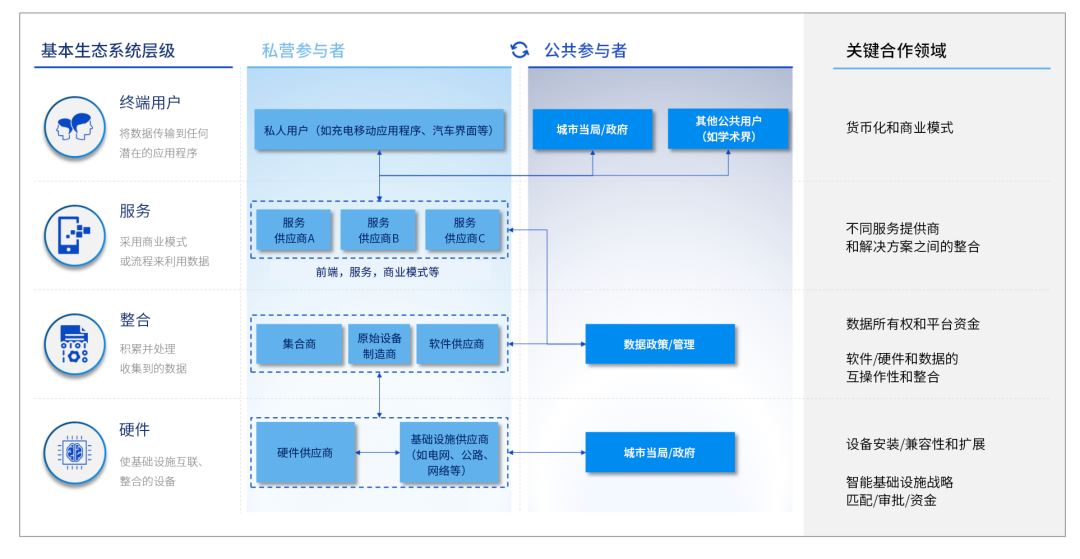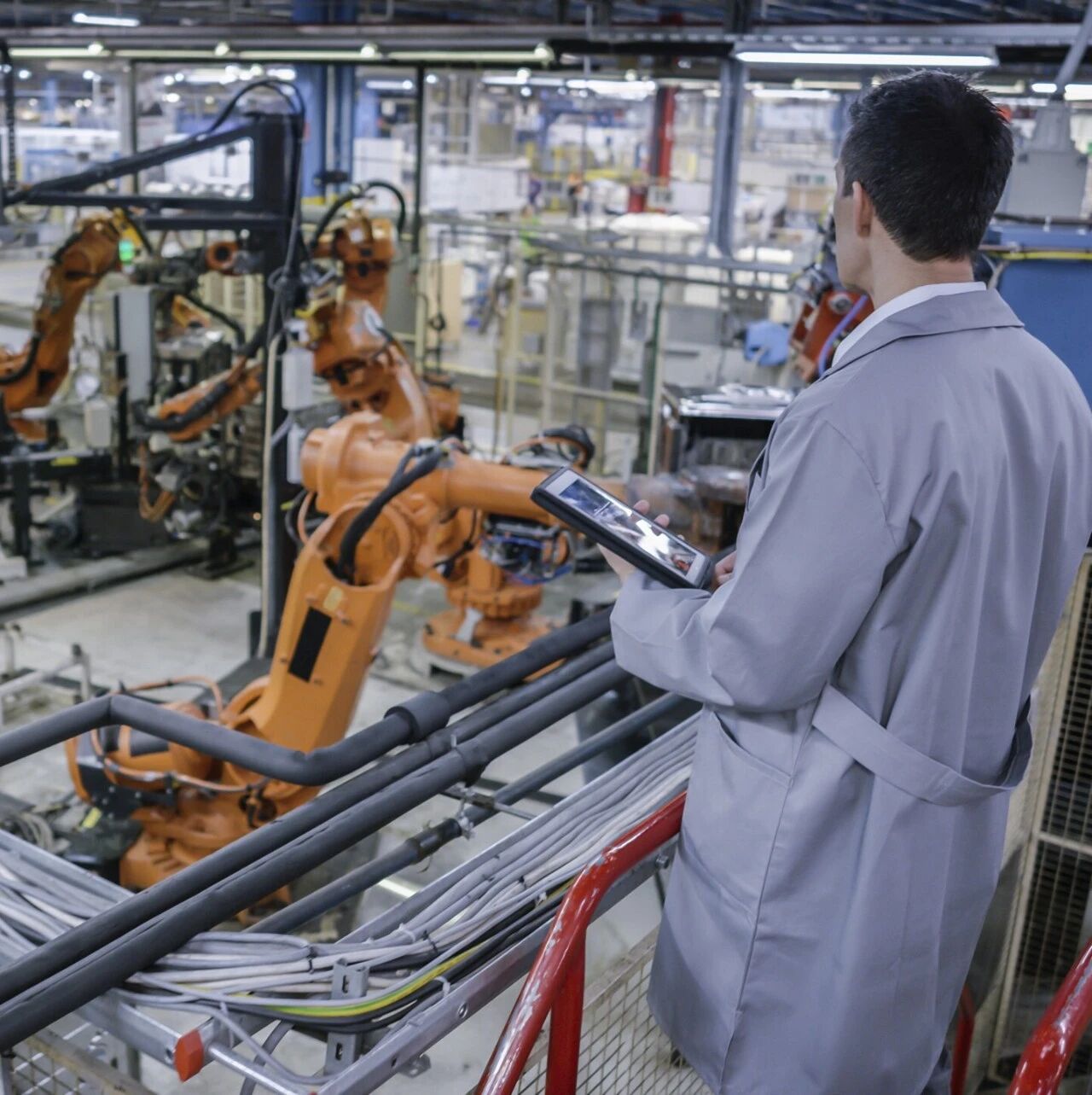Infrastructure connectivity can boost the production and adoption of electric vehicles.
Image source:Getty Images
Maria Alonso
Global Managing Director of the World Economic Forum's Automation Systems
Markus Hagenmaier
Partner and Vice Director, Mobility Innovation & Digitalization, Boston Consulting Group
Ivan Butenko
Boston Consulting Group consultant and World Economic Forum project researcher
Connected infrastructure enables us to use roads and vehicles more effectively and efficiently.
It has the potential to revolutionize the way we travel, making road traffic more efficient, safer, and cleaner.
"The Software-Driven Automotive Era" community highlighted key initiatives essential for fully unlocking the potential of intelligent road traffic infrastructure.
Interconnected infrastructure has the potential to fundamentally transform how we travel, making road traffic more efficient, safer, and cleaner. Here are four key use cases relevant to the four public-private partnership agendas:1. Smart Electric Vehicle Charging: Accelerating Electrification, Improving Air QualitySmart electric vehicle (EV) charging can provide real-time data on charging station availability, optimize charging schedules, and deliver a seamless charging experience. In turn, this helps reduce the uncertainty around charging, accelerating the adoption of electric vehicles. It also contributes to lowering greenhouse gas emissions and air pollution.2. Advanced Traffic Management: Enhancing Road Safety and Traffic EfficiencyReal-time traffic and accident data can improve traffic flow and enhance road safety. By dynamically adjusting the timing of traffic light cycles, we can optimize existing roads for better traffic capacity. Additionally, leveraging advanced traffic management technologies ensures that vehicles are promptly notified when obstacles appear on the road.3. Smart Parking: Save Time, Reduce CongestionSmart parking leverages real-time data from sensors and cameras to guide drivers to available parking spaces. Software-defined vehicles can access the necessary information before reaching their destination, allowing them to directly reserve a spot and pay for parking in advance. This system helps drivers locate parking more quickly, saving time while reducing congestion and lowering emissions.4. Smart Tolling: Optimizing road usage and streamlining toll collection processesAdaptive tolling effectively guides traffic flow by adjusting pricing based on factors such as congestion levels and pollution intensity. Currently, toll stations rely on third-party transponders and license plate recognition technology for fare collection. Meanwhile, software-defined vehicles introduce a new tolling mechanism that seamlessly integrates the charging process into the broader Vehicle-to-Everything (V2X) transportation system.Major smart infrastructure use cases.
Image source:World Economic Forum
These use cases become even more critical when humans are no longer directly involved—specifically, after autonomous vehicles are deployed. Thanks to communication between vehicles and infrastructure, self-driving cars can ensure safe and efficient traffic flow, making activities like parking, charging, and toll collection far more convenient.Unlocking Value: 6 Key ActionsAs part of the DRIVE-A initiative, the "Cars in the Software-Driven Era" community has identified six key actions that are essential for unlocking the full potential of intelligent road transport infrastructure and realizing the transformative benefits of a software-defined vehicle ecosystem. These six actions are grounded in three core principles: collaboration, innovation, and efficiency.1. Strive to achieve closer public-private partnershipsAdvancing the development of smart infrastructure requires collaboration among all relevant stakeholders. Figure 2 provides a collaborative framework and highlights key areas for partnership. Public-private cooperation is essential in building a robust, unified, and inclusive smart infrastructure network.BorgWarner Global Executive Vice President and Chief Strategy Officer Paul Farrell highlighted the importance—and challenges—of such collaborations: "Collaboration around infrastructure is incredibly complex, spanning multiple disciplines. It raises critical questions about who owns the data, who supplies the hardware, who installs it, and who integrates it into a comprehensive solution. Yet, this is precisely what’s essential for advancing the electrification process, particularly in areas like building the EV charging infrastructure needed to drive progress."Promote the collaborative framework for smart infrastructure.
Image source:World Economic Forum, Boston Consulting Group
2. Enhance Data AccessibilityTo unlock the benefits of smart infrastructure, data sharing is essential. As Philippe Hahn, CTO and Global Vice President of Development & Operations at Yunex Traffic, puts it: "Technology has already made it possible to create digital twins of road intersections, providing real-time alerts to cars and vulnerable road users about potential hazards. But to fully leverage this technology in practical deployments, we need collaborative data sharing."There are three key elements that can help accelerate data sharing: competitive win-win partnerships; reaching consensus on specific data that needs to be shared to create added value; and agreeing on streamlined processes for data management and sharing.In the electric vehicle charging sector, there are already several examples of regionally implemented data-sharing policies (such as the European Common Energy Data Space). However, a more comprehensive and large-scale approach remains to be developed.3. Establish Unified Standards for Smart InfrastructureEstablishing unified standards and connectivity protocols for smart infrastructure is essential for building a more interconnected transportation network. These standards enable diverse stakeholders to deliver services across various types of infrastructure, expanding coverage while enhancing user flexibility. Standardization also fosters the development of a cohesive, interoperable system that benefits both the industry and the public.4. Strengthen the integration between vehicles and their intelligent infrastructure ecosystem.Deeper integration of software-defined vehicles with the intelligent infrastructure surrounding them can unlock even greater added value. This kind of integration leads to a more seamless user experience. MTR Lab is actively advancing this integration in Hong Kong: "We're building a platform that offers an all-in-one parking solution," explains Michael Chan, Managing Director of MTR Lab. "Our platform provides a versatile, integrated parking service—encompassing everything from finding available parking spots and paying for parking to offering EV charging at shopping centers and more."Deep integration between vehicles and intelligent infrastructure also facilitates the "communication loop," enabling the ecosystem to gather user feedback through the car’s human-machine interface—and ensuring data accuracy, such as information on parking space availability.5. Optimize Infrastructure UtilizationSmart infrastructure isn’t cheap. Therefore, ensuring it’s used to its full potential is key to reducing costs and improving financial viability. To achieve this goal, smart infrastructure needs to be better designed and strategically positioned. And of course, having access to comprehensive, accurate data is essential for making informed decisions.Fujitsu recently shared its accumulated insights: "We’ve observed that focusing on energy mix and fostering cross-sector data collaboration is key to optimizing electric vehicle charging strategies—enabling us to reduce CO₂ emissions and ultimately decarbonize the transportation industry."Shunichi Ko, Senior Vice President of Fujitsu and Head of the Cross-Industry Solutions Division, said: "By bringing together data from various stakeholders, we’ve simulated the optimal charging plan on a digital twin, which not only enhances the utilization of green energy but also optimizes charging patterns—ultimately leading to a 15% reduction in carbon dioxide emissions."6. Engage in targeted use-case collaborationWhile many use cases require systematic efforts (such as establishing a data accessibility framework), the potential for implementing a universal approach to building smart infrastructure remains limited in the real world.The key is to address specific transportation and mobility challenges each time we collaborate—such as electric vehicle charging for urban delivery fleets or parking issues in heavily congested areas. This targeted approach helps ensure that the business case delivers clear social and economic value, ultimately fostering both funding flows and collaborative partnerships.
The above content solely represents the author's personal views.This article is translated from the World Economic Forum's Agenda blog; the Chinese version is for reference purposes only.Feel free to share this on WeChat Moments; please leave a comment below the post if you’d like to republish.
Translated by: Sun Qian | Edited by: Wang Can
The World Economic Forum is an independent and neutral platform dedicated to bringing together diverse perspectives to discuss critical global, regional, and industry-specific issues.
Follow us on Weibo, WeChat Video Accounts, Douyin, and Xiaohongshu!
"World Economic Forum"







